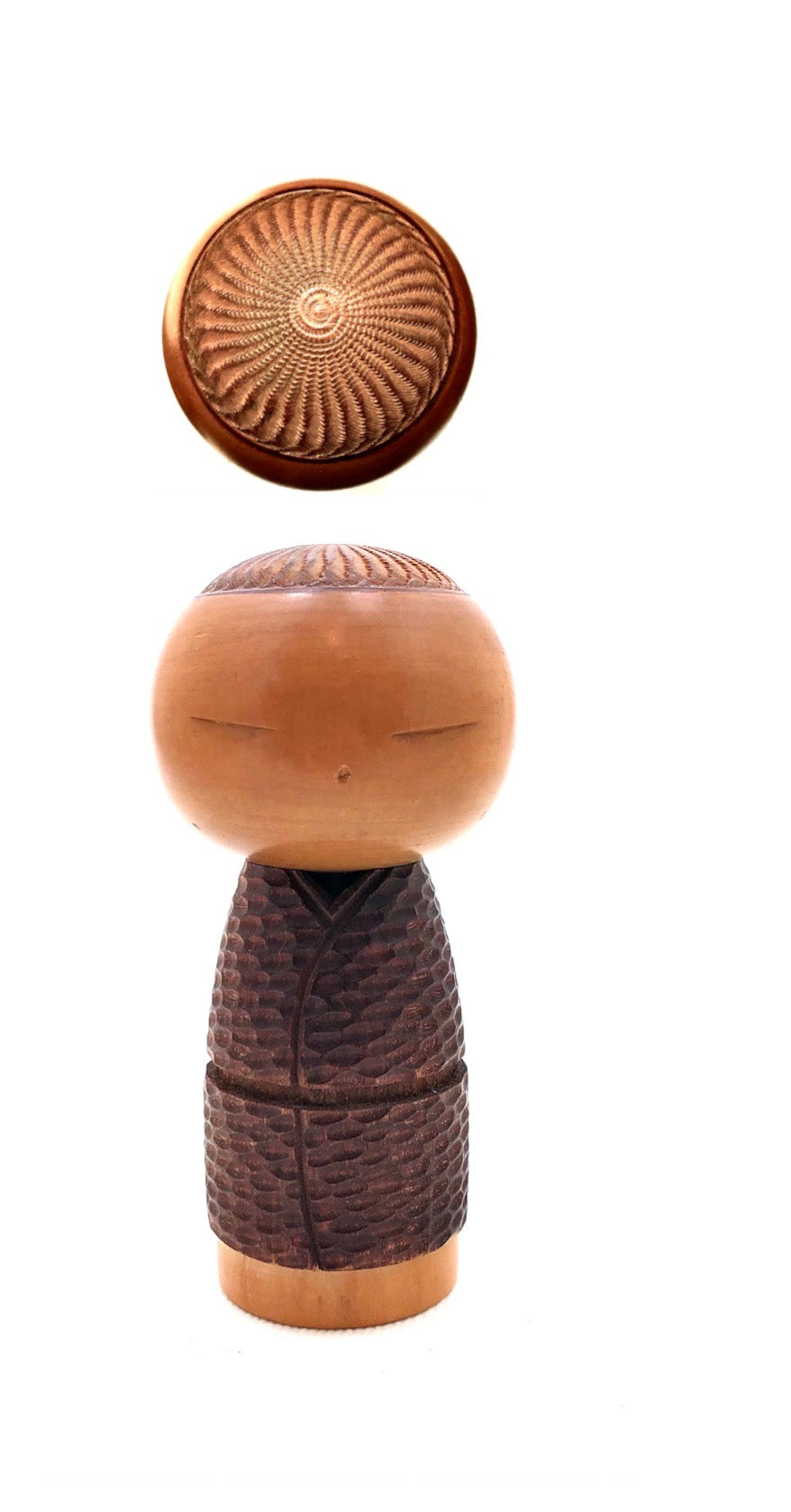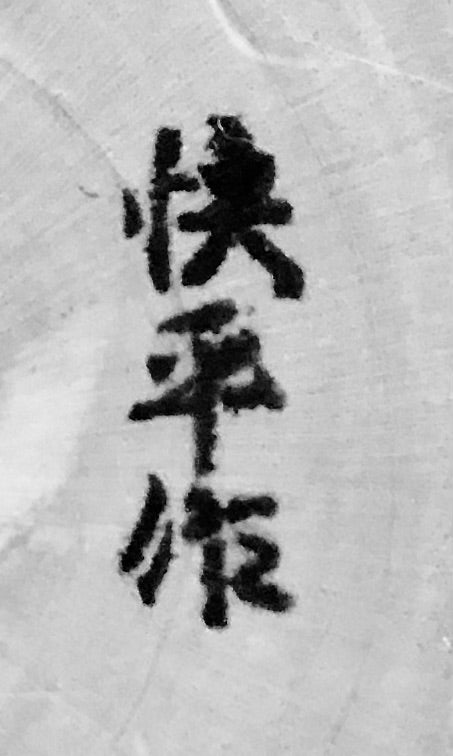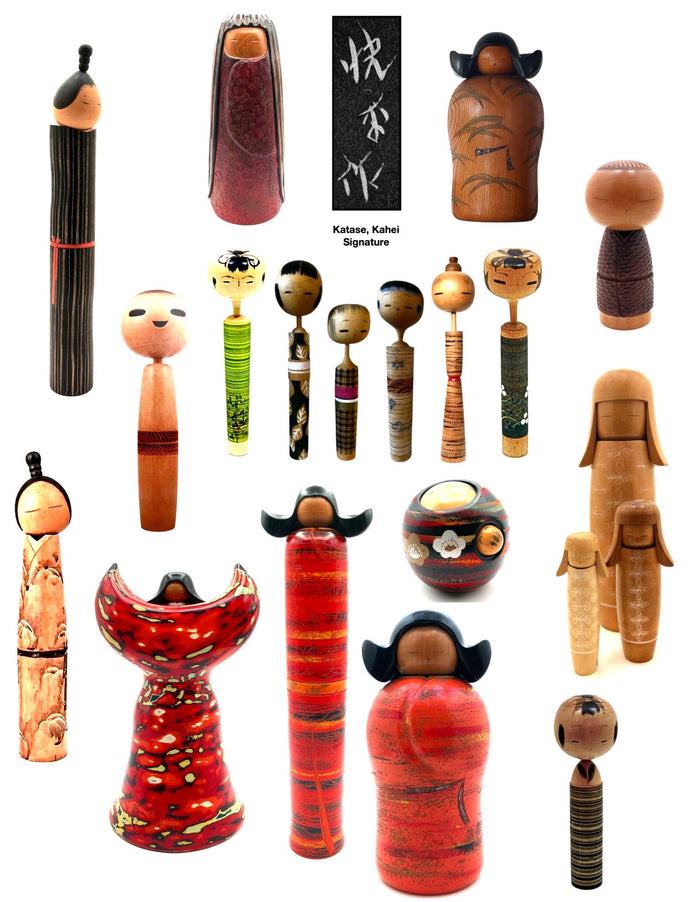

Vintage Sosaku Kokeshi entitled: “Shoshinsha no sori ~yo | Novice Monk” by Katase, Kaihei | 1921-2015
Dimensions: 6-0”h
Buddhism and Shintoism are the most popular practiced religions in Japan. Monasteries were places where young children from poor families went to learn how to read, write, and pray, and many monks served as teachers and recruiters.
This Sosaku Kokeshi represents a young Samanera, (monk) who has been accepted into the monastery but has not yet undergone higher ordination. As shown in this figure, the practice of cutting or shaving the hair on the scalp in a pinwheel pattern called ‘Tonsure’, is a sign of religious devotion or humility. Both the hair and body display the use of “Chatter Work”, (Birikan’na), to give texture to each element. The eyes are simple shallow carvings showing a humble child prepared for learning. Young monks were given three garments, inner, lower, and outer. Portrayed is a small child, (a monk, as it were), wearing a brown robe, “civara ”, which means a robe without any symbolic meaning to its color. The artist's impressed stamp is on the bottom.

Artisan
Woodworker: Katase, Kahei
1922-2015
Biographical History:
Katase-san was born in Kanazawa prefecture in 1921 in a region known for its beautiful wooden marquetry crafts. Katase-san, the son of a Kijishi, (woodworker), began making creative Kokeshi in 1946. He won the first Prime Minister’s Award in 1954 at the ‘All Nippon Kokeshi Competition’. Along with many of his fellow Sosaku artists, Katase-san was a soldier and perhaps turned to creative Kokeshi-making to assuage the rigors of a long-fought war. Since 1962, he served as a judge at the Kokeshi Contest in Japan. In 1955, his work was dedicated to Her Majesty the Empress. In 1970 he was awarded the holder of Excellent Technique and was named a member of Meiko-Kai. He went to the United States in 1973 to direct the overseas exhibition in St Louis, where he was introduced through a television program at Missouri State. He was a member of the Cultural Properties Protection Committee of Hakone Town and a member of the Nippon Kokeshi Artistic Handicraft Association.
Collector's note – descriptive qualities, standard characteristics & ornamentation styles:
Many of his pieces are differently treated, with the natural contrasting head, and the natural grooved and stained body. He illustrates obi, inset into the doll with a hemp motif, (In early times, “asa” was an important source of cloth, and hemp leaves themselves formed the basis of a variety of hemp patterns). History tells us that the ‘God of Hemp’ is revered at Oasahiko Shrine in Tokushima. He additionally renders spring with cherry blossoms, wheat, trees, and stars to give character to his dolls. He seems to enjoy the rendering of long flowing unbound hair, (taregami) and details such as the inlay of silver motifs on the body.
And finally, it is unusual to see a doll made of three bulbous forms that compose the body and head, utilizing different woods to express the desired detail.
Katase focuses on what is known as “one-off” dolls turned from one piece of wood and detailed throughout the figural form. They primarily illustrate the “new” styles of Japan of the 18th century when the Dutch East Indies Trading Company influenced Japanese everyday life and customs. Katase-san is a master of lacquered color finishes incorporated with detailed carving of elements in the natural environment. Buddhist figures, which are intricately carved, are another style by this artist.
Explore & Learn More about Woodworker: Katase, Kahei